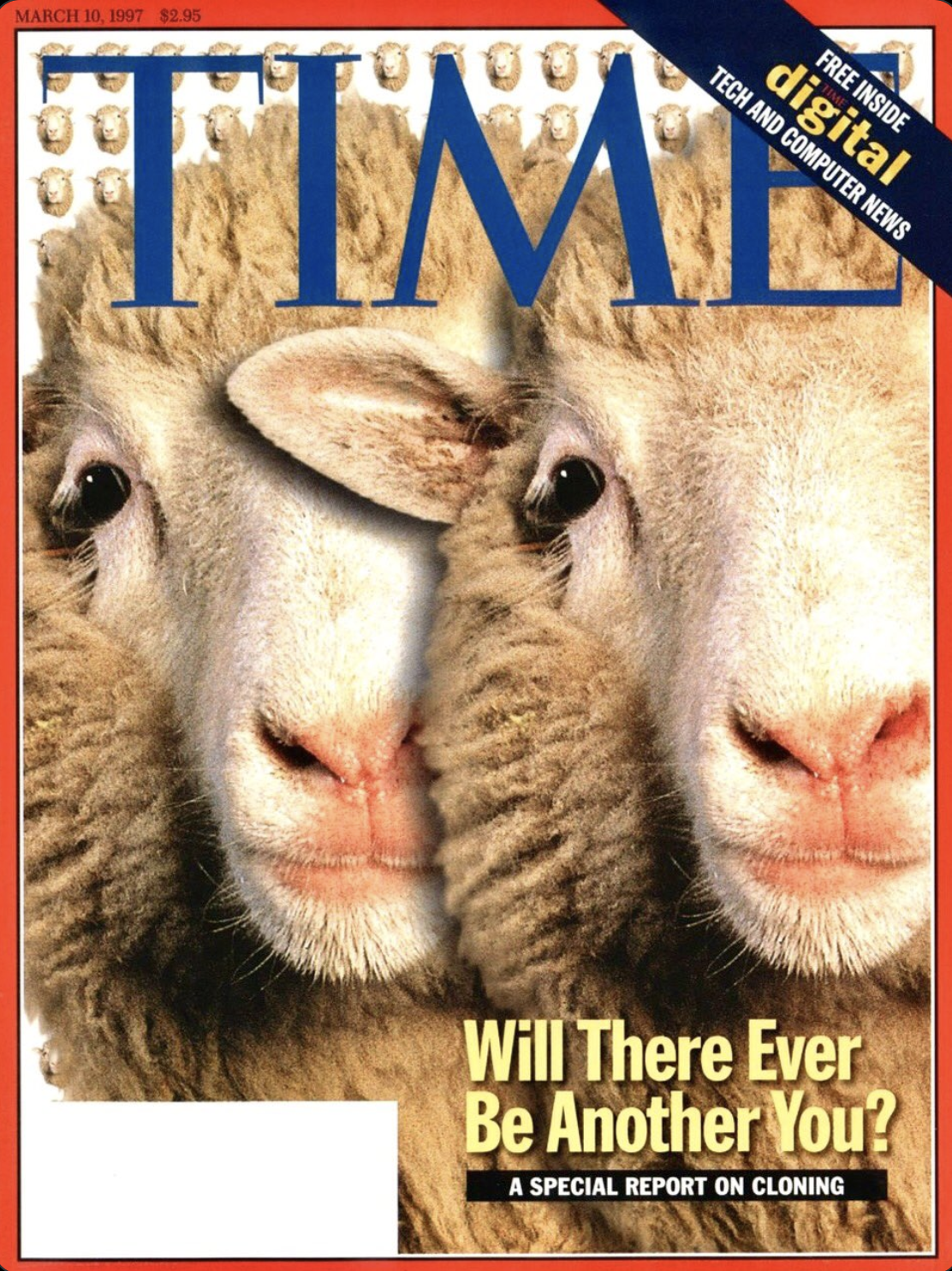
When Dolly the sheep was born 30 years ago, few took note of the remarkable lamb. To know what was special about her, you’d have to look at her DNA: she was the first example of successful cloning of a mammal from an adult cell.

When Dolly the sheep was born 30 years ago, few took note of the remarkable lamb. To know what was special about her, you’d have to look at her DNA: she was the first example of successful cloning of a mammal from an adult cell.

To create Dolly, the [Roslin Institute] team concentrated on arresting the cell cycle—the series of choreographed steps all cells go through in the process of dividing. In Dolly‘s case, the cells the scientists wanted to clone came from the udder of a pregnant sheep. To stop them from dividing, researchers starved the cells of nutrients for a week. In response, the cells fell into a slumbering state that resembled deep hibernation.
They placed the egg next to the nucleus of a quiescent donor cell and applied gentle pulses of electricity. These pulses prompted the egg to accept the new nucleus—and all the DNA it contained—as though it were its own. They also triggered a burst of biochemical activity, jump-starting the process of cell division. A week later, the embryo that had already started growing into Dolly was implanted in the uterus of a surrogate ewe.
